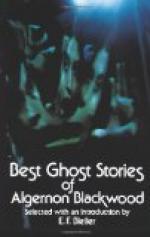An adventurous bookseller had ventured to print a considerable edition of a work by the Reverend Charles Drelincourt, minister of the Calvinist church in Paris, and translated by M. D’Assigny, under the title of “The Christian’s Defense against the Fear of Death, with several directions how to prepare ourselves to die well.” But however certain the prospect of death, it is not so agreeable (unfortunately) as to invite the eager contemplation of the public; and Drelincourt’s book, being neglected, lay a dead stock on the hands of the publisher. In this emergency, he applied to De Foe to assist him (by dint of such means as were then, as well as now, pretty well understood in the literary world) in rescuing the unfortunate book from the literary death to which general neglect seemed about to consign it.
De Foe’s genius and audacity devised a plan which, for assurance and ingenuity, defied even the powers of Mr. Puff in the Critic: for who but himself would have thought of summoning up a ghost from the grave to bear witness in favor of a halting body of divinity? There is a matter-of-fact, business-like style in the whole account of the transaction, which bespeaks ineffable powers of self-possession. The narrative is drawn up “by a gentleman, a Justice of Peace at Maidstone, in Kent, a very intelligent person.” And, moreover, “the discourse is attested by a very sober gentlewoman, who lives in Canterbury, within a few doors of the house in which Mrs. Bargrave lives.” The Justice believes his kinswoman to be of so discerning a spirit, as not to be put upon by any fallacy—and the kinswoman positively assures the Justice, “that the whole matter, as it is related and laid down, is really true, and what she herself heard, as near as may be, from Mrs. Bargrave’s own mouth, who, she knows, had no reason to invent or publish such a story, or any design to forge and tell a lie, being a woman of so much honesty and virtue, and her whole life a course, as it were, of piety.” Skepticism itself could not resist this triple court of evidence so artfully combined, the Justice attesting for the discerning spirit of the sober and understanding gentlewoman his kinswoman, and his kinswoman becoming bail for the veracity of Mrs. Bargrave. And here, gentle reader, admire the simplicity of those days. Had Mrs. Veal’s visit to her friend happened in our time, the conductors of the daily press would have given the word, and seven gentlemen unto the said press belonging, would, with an obedient start, have made off for Kingston, for Canterbury, for Dover,—for Kamchatka if necessary,—to pose the Justice, cross-examine Mrs. Bargrave, confront the sober and understanding kinswoman, and dig Mrs. Veal up from her grave, rather than not get to the bottom of the story. But in our time we doubt and scrutinize; our ancestors wondered and believed.




